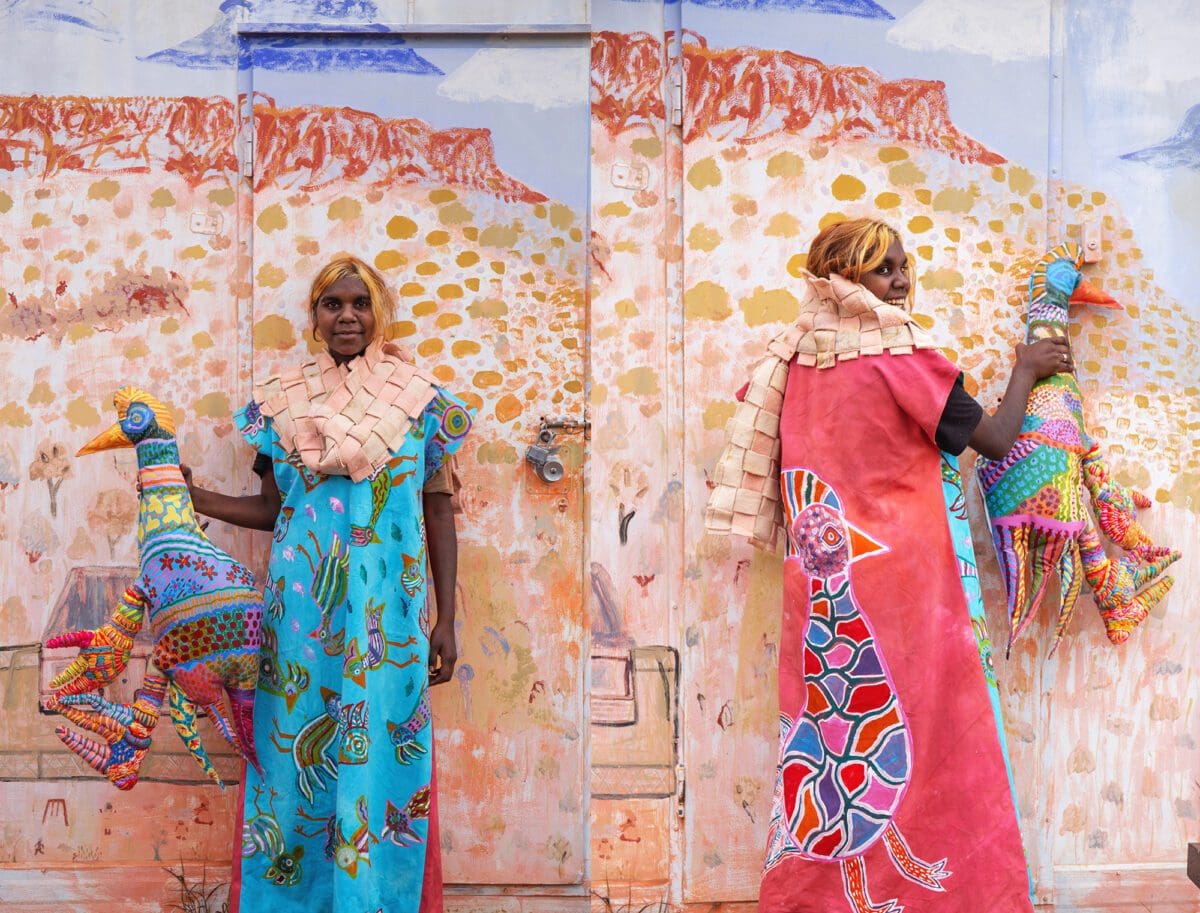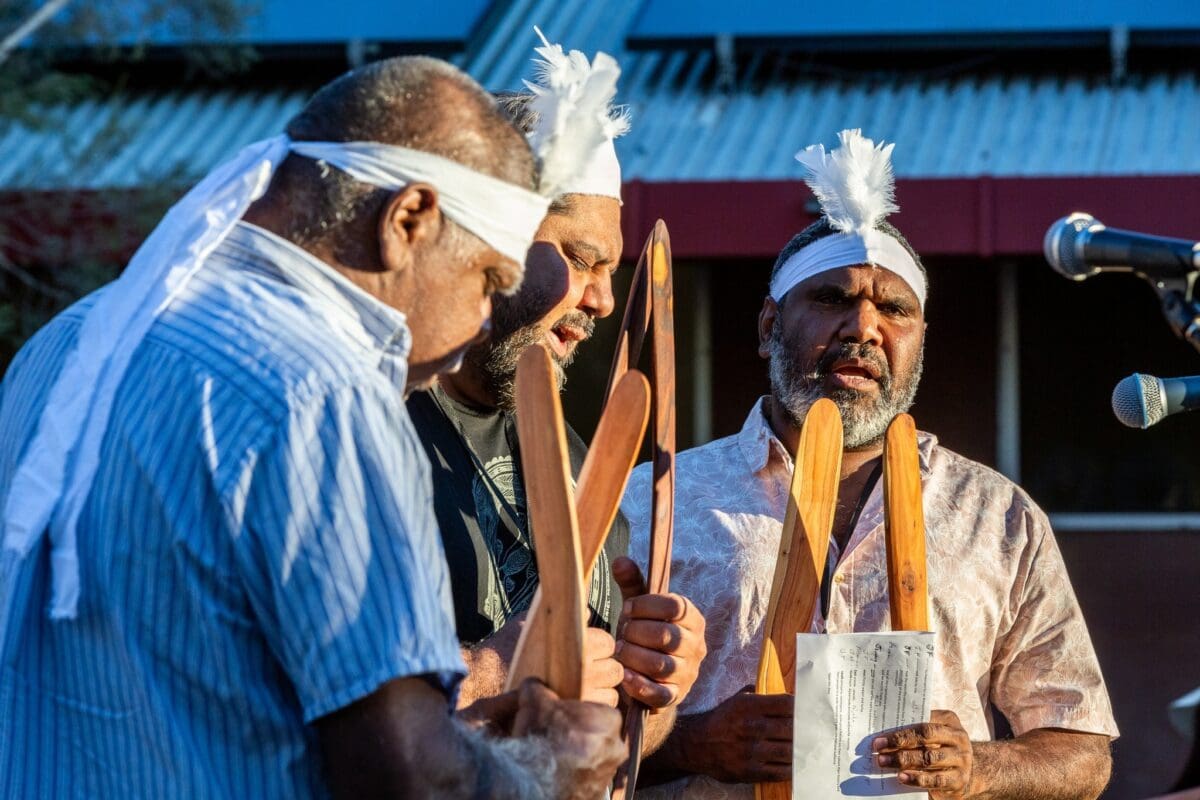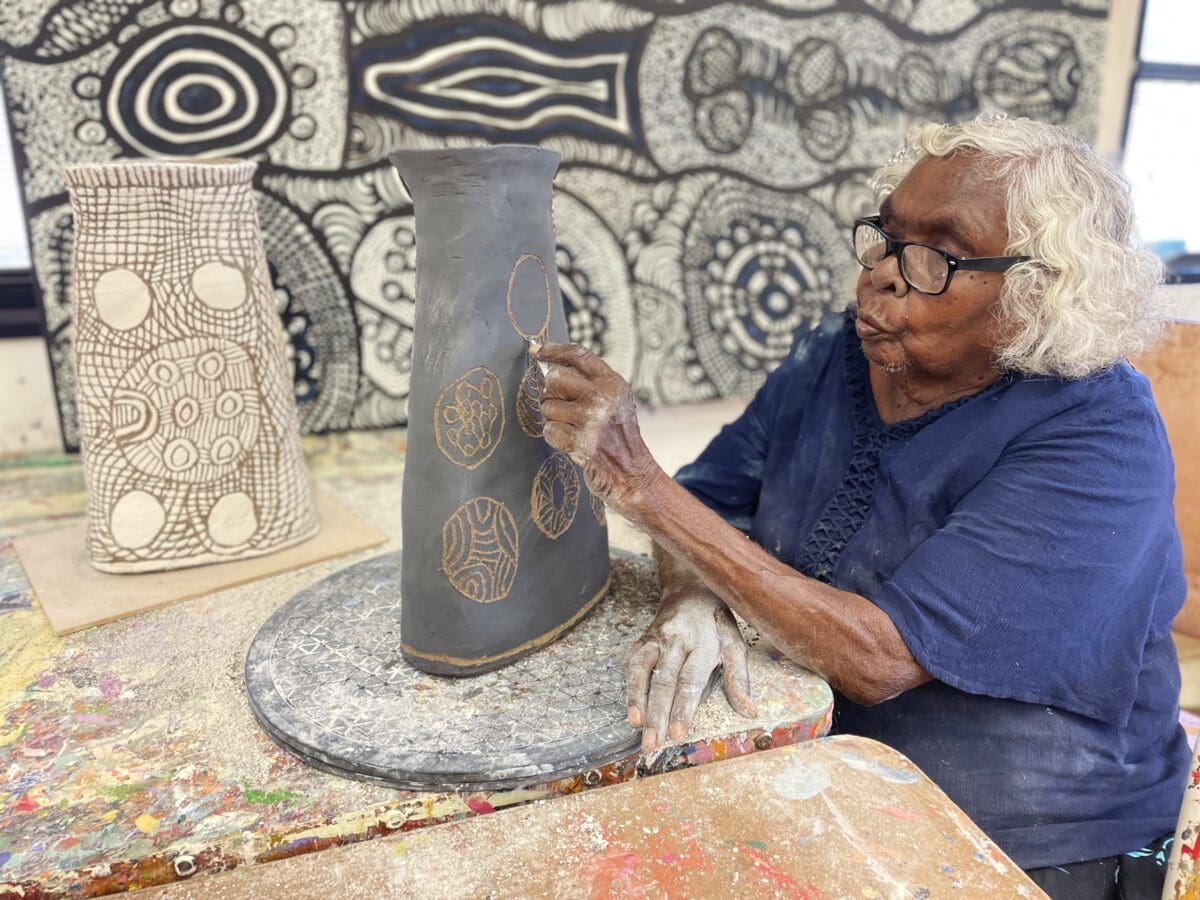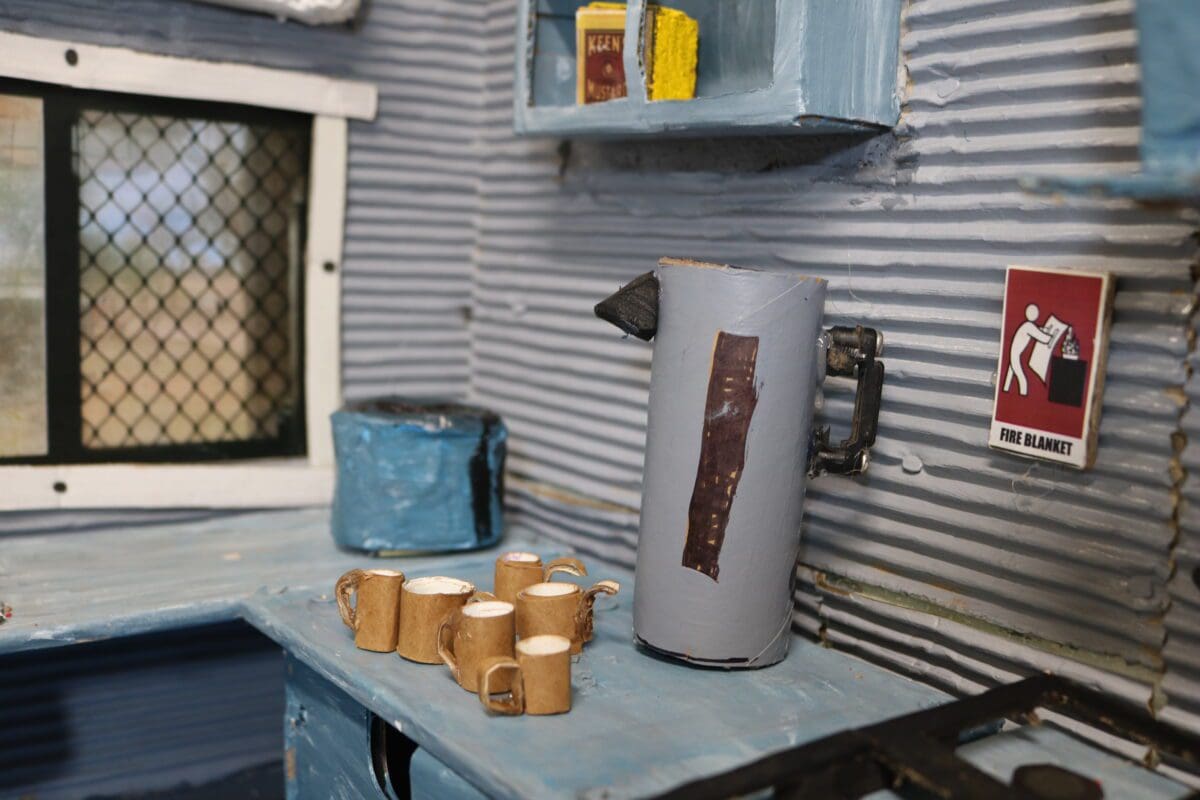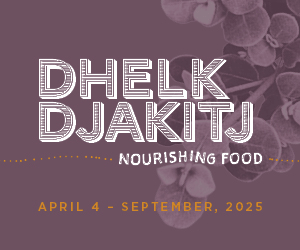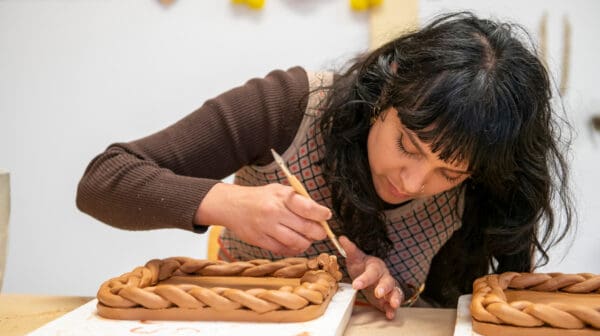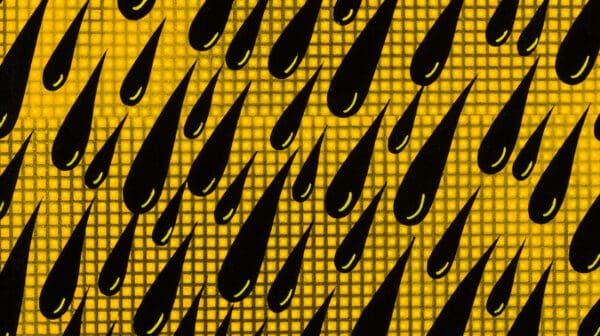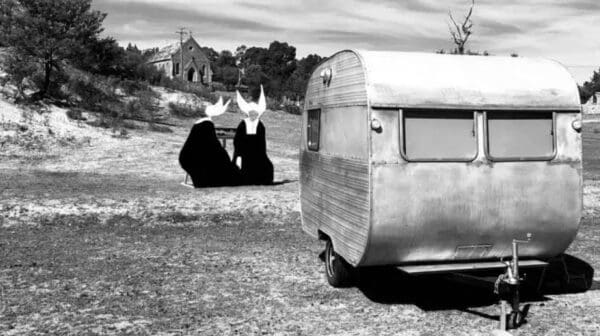At Tjuntjuntjara, a community in the Great Victoria Desert in Western Australia, mother-and-daughter artists Pamela Hogan and Ningbell Lyons are readying to drive 1,200 kilometres north-east to Mparntwe/Alice Springs, to screen two films to audiences gathered from far and wide.
Their artists’ collective, known as Milpa—a digital multimedia off-shoot of the Spinifex Arts Project—has created the three-minute stop-motion film The Tjuntjuntjara Nya Cooking Show, in which two female hand-crafted puppets made of polymer clay show how to make butter chicken.
“The six-week event features a program of art events that span exhibitions, symposiums, a marketplace, workshops, demonstrations, performances and satellite events.”
The film is set in a replica of the Tjuntjuntjara community kitchen, the set and props drawn from recycled materials. Crucially, the script is in Pitjantjara, with English subtitles, all written and voiced by Hogan and her niece, Kendrea, who have lent their names to the characters.
“It’s really important to have people understand what we say, to keep [the language] strong and alive,” says Hogan via video conference, surrounded by women artists from her family. Women have taken strong leadership roles in Milpa’s work. “We make a little plan, and then we do it,” says Hogan, holding up one of the puppets. “It’s team work, putting it all together, adding little voices in, having to move the puppets around.”
The Tjuntjuntjara Nya Cooking Show will be screened at Desert Mob, an annual gathering at Mparntwe’s Araluen Arts Centre, which hosts hundreds of Indigenous artists from 35 community arts centres from a geographic area spanning 16 language groups. The six-week event features a program of art events that span exhibitions, symposiums, a marketplace, workshops, demonstrations, performances and satellite events. “It’s good to be there with a lot of different faces,” says Hogan. “It’s fun to meet all the people.”
The Milpa artists will also launch a second stop-motion animation at Desert Mob called Boulder Camp, dealing with the subject matter of drinking, which the artists prefer not to discuss—they want the work to speak for itself.
The digital work at Tjuntjuntjara, located 650 kilometres north-east of Kalgoorlie, began about five years ago. Facilitated and coordinated by Ange Leech, the project employs Anangu artists to produce new artworks to tell stories in local dialects. Some of the senior artists have also been filmed giving interviews about their homeland stories. Pamela Hogan has spoken of being brought from Country at Yakatunya to Tjuntjuntjara on an Army truck when she was seven.
“It’s about talking for our younger generations, the stories about our old people, how they used to live out bush,” says Hogan. “It’s in the future for young people, to understand where we come from.”
The opening event will feature dance and music performances, including the Central Australian Aboriginal Women’s Choir, with the program including the Desert Mob symposium, which will return to the Araluen Arts Centre for the first time since 2019, providing a forum for artists to talk about their work and its cultural underpinnings.
“The Desert Mob Marketplace at Araluen will feature more than 30 art centre stalls, and audiences will be able to visit the Hermannsburg Potters Art Centre in Ntaria, visiting the studios and meeting the artists.”
In addition to the Milpa digital project, the Hermannsburg Potters will present Ntaria Clay – past and present; Warlayirti Artists will showcase Ngurra Kutjuwarra(on Country together) about the healing power of Country; and Yarrenyty Arltere Artists and Ewyenper Atwatye x Magpie Goose will each present fashion premieres.
The Desert Mob Marketplace at Araluen will feature more than 30 art centre stalls, and audiences will be able to visit the Hermannsburg Potters Art Centre in Ntaria, visiting the studios and meeting the artists.
Desert Mob has grown exponentially since it was established in 1991 by the Araluen Arts Centre, when it featured the contemporary art of 13 art centres and art collectives. Today, it is run by Desart, the Association of Central Australian Aboriginal Art Centres, which was established in 1992, covering a membership area of 1,221 million square kilometres.
Desert Mob
Araluen Arts Centre
Mparntwe/Alice Springs
7 September—22 October


